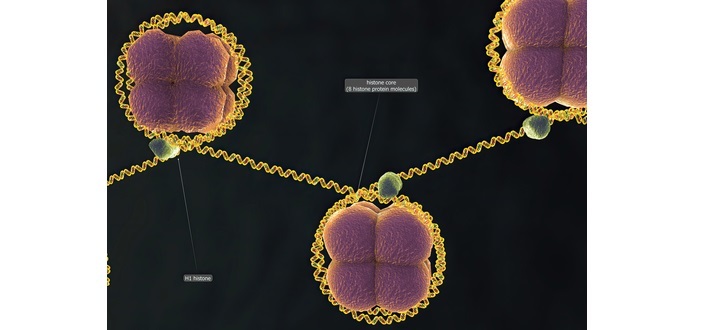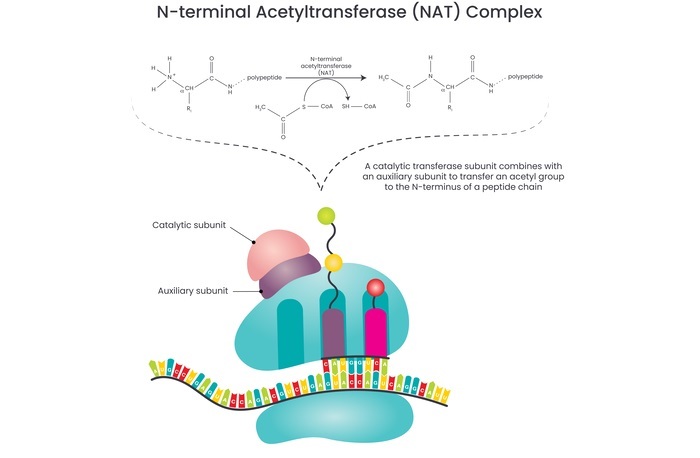
 Data Structure
Data Structure Networking
Networking RDBMS
RDBMS Operating System
Operating System Java
Java MS Excel
MS Excel iOS
iOS HTML
HTML CSS
CSS Android
Android Python
Python C Programming
C Programming C++
C++ C#
C# MongoDB
MongoDB MySQL
MySQL Javascript
Javascript PHP
PHP
- Selected Reading
- UPSC IAS Exams Notes
- Developer's Best Practices
- Questions and Answers
- Effective Resume Writing
- HR Interview Questions
- Computer Glossary
- Who is Who
Signal Peptides: An Overview
Introduction
A signal peptide, also known as a signal sequence, is a brief peptide that is typically 16 to 30 amino acids long. It can also occasionally be found nonclassically at the C or internal regions of most newly synthesised proteins that are headed for the secretory pathway.
These proteins include those that are either inserted into most cellular membranes or found inside specific organelles, such as the endoplasmic reticulum, Golgi, or endosomes. The majority of type II and multi-spanning membrane-bound proteins are directed to the secretory pathway by their first transmembrane domain, which biochemically resembles a signal sequence but is not cleaved.
Although most type I membrane-bound proteins have signal peptides, this is not the case for type II and multi-spanning membrane-bound proteins.

Function
A cell is prompted by signal peptides to translocate the protein, often to the cellular membrane.
Signal peptides in prokaryotes drive freshly generated proteins to the plasma membrane's SecYEG protein-conducting channel.
In eukaryotes, a similar mechanism exists where the signal peptide guides the newly generated protein to the Sec61 channel, which is found in the endoplasmic reticulum and has structural and sequence similarities with SecYEG.
Translocation through this channel, which includes the SecYEG and Sec61 channels, is referred to as the translocon.
Transmembrane domains may diffuse past a lateral gate in the translocon to partition into the surrounding membrane while secreted proteins are threaded through the channel.
Structure
The "h-region"?a lengthy section of hydrophobic amino acids that makes up the heart of the signal peptide and is between 5 and 16 residues in length?has a propensity to coil into a single alpha-helix.
Moreover, many signal peptides start with a brief positively charged stretch of amino acids, which may support the positive-inside rule's ability to maintain the appropriate structure of the polypeptide during translocation.
It is known as the "n-region" due to its proximity to the N-terminus. Signal peptidase normally recognises and cleaves a stretch of amino acids at the end of the signal peptide, which is why this region is known as the cleavage site.
However, the transmembrane-domains, also known as signal anchor sequences, that function as signal peptides lack this cleavage site.
In order to produce a mature protein and a free signal peptide, signal peptidase may cleave before or after the translocation is complete. Then, certain proteases break down the free signal peptides.
Also, distinct signal peptide types aim for various target areas. A target peptide aimed for the mitochondrial environment, for instance, has a different length and alternates between short positively charged and hydrophobic regions in its structure.
Both the N-terminus and the C-terminus of a protein contain nucleus targeting signal peptides, which are typically kept in the mature protein.

Co -Translational Pathway |
Post Translational Pathway |
|---|---|
After the signal peptide leaves the ribosome and is detected by the signal-recognition particle, the co-translational pathway is started (SRP). |
When protein synthesis is finished, the post-translational process is started. In prokaryotes, the SecB chaperone protein recognises the signal sequence of post-translational substrates and transfers the protein to the SecA ATPase, which then pumps the protein through the translocon. |
The signal sequence-ribosome-mRNA complex is subsequently directed to the SRP receptor, which is located on the surface of either the plasma membrane (in prokaryotes) or the ER, where translational arrest only occurs in Eukaryotes (in eukaryotes). |
Although post-translational translocation in eukaryotes is known to occur, little is known about it. |
The signal sequence is introduced into the translocon following membrane-targeting. Protein synthesis then resumes as ribosomes are physically attached onto the cytoplasmic face of the translocon. |
The translocon and two other membrane-bound proteins, Sec62 and Sec63, are known to be necessary for yeast post-translational translocation. |
Signal Recognition Particle (SRP)
Just the ER and no other type of membrane are involved in the creation of secretory and other non-cytoplasmic proteins.
As a result, the ER membrane must possess a distinguishing characteristic. As soon as the ER signal peptide leaves the ribosome, the SRP, which is made up of six polypeptide chains and a 300-nucleotide RNA, binds to it.
SRP Receptors
The 650-residue integral membrane protein known as SRP receptor mediates the interaction of the ribosome/polypeptide/SRP complex with the membrane. It can bind to both SRP and the ribosome.
On the cytosolic surface of the rER, this protein is visible. GTP binding domains are present, according to a closer examination.
Signal Peptidase
The proper interpretation of the sorting signals and the delivery of all proteins to their intended locations are made possible by a variety of supporting variables. Signal peptidases are specialised enzymes that are in charge of removing the signal peptide sequences from proteins.
Once the protein has been directed to the desired place by the signal peptide, these enzymes are turned on. The majority of organelle compartments have unique variants that can only cleave members of one class and not others.
Conclusion
Although both are occasionally ambiguously referred to as "leader peptides," signal peptides should not be confused with the leader peptides that can occasionally be encoded by leader mRNA.
These additional leader peptides are brief polypeptides that do not contribute to the final protein sequence and may control the transcription or translation of the primary protein rather than contributing to protein localisation.
Although a similar method, known as uORFs, is employed to regulate eukaryotic genes, this sort of leader peptide usually relates to a form of gene regulation seen in bacteria (upstream open reading frames).

